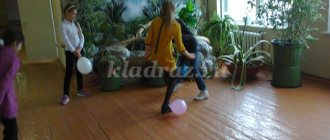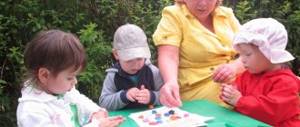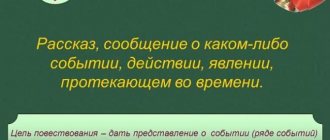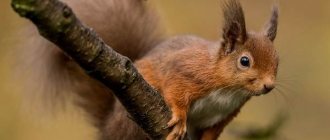Drawing with plasticine: basic techniques
A number of techniques are already known to children, because drawing with plasticine is preceded by learning to sculpt.
Kids already know how to:
- roll up;
- roll out;
- flatten;
- pull out;
- give the desired shape to a piece of plasticine.
What skills do children acquire when learning plasticineography?
To draw with plasticine, children will have to learn:
- pinch off;
- smear;
- press in;
- smooth;
- mix colors;
- add texture using stacks.
There are many ways to create an image:
1. Direct . Different colors of plasticine are used. The most popular patterns are vegetables, leaves, mushrooms, and fish. Direct plasticineography is the first acquaintance with unusual drawing. Large and simple shapes are used, which are easy for even kids to work with.
2. Stained glass (reverse) . A drawing is applied to the plexiglass plate with a marker. The resulting contour is filled with plasticine. Reverse plasticineography is very effective. Very often, sour cream lids are used as a base.
3. Mosaic. The figure or design is created with multi-colored plasticine balls. Mosaic plasticineography is very simple. The secret to beautiful drawings is a good selection of colors and accuracy. An example of such a technique is the master class “Cockerel Fish”, the body of which is lined with mosaics.
4. Contour. This method is practiced by older children. The contour is filled with plasticine flagella, which are squeezed out using a syringe. The material must be heated. For this purpose, use either a microwave or hot water. A plasticine sausage is placed in a syringe without a needle and heated along with it.
5. Multi-layered. The material is applied with multi-colored strokes. The painting is created by layering. The result is a three-dimensional image. Like, for example, in a plasticine Easter card.
6. Textured. The convexity of the image varies. Children learn to create high reliefs, bas-reliefs and counter-reliefs. Textured plasticineography is one of the most difficult types, which is why it is taught to children in preparatory groups. Look how we made a fairy tale character - the Gruffalo.
7. Modular. They perform the elements separately using different techniques, and then build a single composition from them. For example, you can create a relief image from flagella, balls and sausages.
Using this technique you can create a wonderful underwater world.
The description is just an example; everyone will have their own fantasy underwater kingdom. See detailed instructions on how to make an underwater world from plasticine here.
To make corals and algae, you can mix colors to achieve beautiful tints. For example, blue, violet, blue, light green and dark green shades are suitable for making underwater plants. Corals and shells are sculpted from pink, yellow, and white plasticine.
When all the parts are ready, they are attached to a painted sheet of paper.
The craft helps you remember what the inhabitants of the underwater world look like and gives you an idea of scale. It uses figures of different shapes, so children will have to remember all the plasticineography techniques they have learned.
When creating a three-dimensional image, children are faced with the concept of measure. If you overload the picture with details, the whole effect will disappear. Instead of a bright and mysterious underwater world penetrated by the sun's rays, you will get a pile of plasticine figures.
The image contains many small and large details, so it will take a lot of patience and perseverance to reproduce all the inhabitants of the seabed.
This work is great for group work in a kindergarten group. Children learn the skills of teamwork, distribution of responsibilities, mutual assistance, and they will achieve excellent results!
Templates for plasticineography
Templates must be appropriate for the age of the students. If in the younger group preference is given to simple forms, then in the older groups complex images are created, with many elements, with different relief.
The templates are great for kids to get creative with. At the first stage, the contour is simply filled with plasticine. You can build the work differently and use a template on a sheet already covered with plasticine. A butterfly with a flower is made using this technique.
For this craft, leftover plasticine or old crafts are suitable, because you will need beautiful multi-colored tints.
Small pieces of plasticine need to be smeared on paper, trying to make as thin a layer as possible. Print a template that includes the butterfly outline, stem, three leaves, flower core and petals.
Cut out the printed parts from a plasticine-coated sheet. On white paper, use colored felt-tip pens or wax crayons to draw the earth with strokes. Glue the cut out colorful parts. Sculpt the body of a butterfly from plasticine and create a texture on it using a stack. Using a felt-tip pen, draw antennae for the butterfly and make plasticine eyes.
Pupils of the younger group can also cope with this craft. She teaches how to work with a template and trains the skill of smearing plasticine in an even, thin layer. Cutting out parts from a sheet covered with a layer of plasticine requires care and should not be rushed.
The “recycled” use of plasticine shows that opportunities for creativity can be found in already used objects and seemingly unnecessary items.
Plasticineography “Peacock from a CD”
Do you have unnecessary CDs lying around? It’s a shame to throw them away, but are they of any use?
We invite you to put them to work! Let's make a craft from a CD - a beautiful peacock with a multi-colored plasticine tail. This craft is suitable for children from 2 years old. We will sculpt using mosaic and flagellar plasticine techniques.
And if you like the craft, but you don’t have a CD, then you can take regular cardboard as a base and paint it.
Or you can make a peacock like this from plasticine and chenille wire using the plasticine printing technique.
In this master class we will learn how to sculpt pictures from plasticine using the mosaic technique, and also use the technique of smearing and adding texture using stacks.
Materials:
- wax plasticine;
- white thick paper or A4 cardboard for the background;
- stacks for modeling;
- sequins for decoration (optional);
- CD.
How to do:
1. Preparation. Set aside the plasticine of the desired color to work with. Choose colors and shades that will go beautifully together! Don't forget that wax plasticine mixes very well with each other and thanks to this you can get any shade you need!
2. We make the peacock's tail on a CD. You can repeat our pattern or come up with your own! We are just setting an example.
Roll long flagella from yellow plasticine and divide the tail into sectors.
We ended up with 8 sectors:
3. In each resulting sector, lay out identical plasticine patterns from circles of different colors. Don't limit your fantasy and imagination! Don't try to make a drawing exactly like ours! In any case, it will turn out beautiful and original!
First we made green decorations:
Then yellow ones:
White:
And at the end - purple:
4. Cover the hole in the disc with a plasticine circle.
5. Make additional patterns from the flagella.
6. Don’t forget to line the tail along the edges with plasticine flagella. This will make the craft look neater.
7. Attach the craft to a white background. When you are finished decorating the tail, glue it to the background using plasticine or a glue gun. Choose thick paper or cardboard so that the craft does not become deformed later.
8. Make legs from thin flagella. Don't forget to use modeling stacks when you need to remove excess plasticine.
9. Sculpt the peacock’s neck and decorate it with patterns. We took purple plasticine and flattened it into the desired shape. Decorations from flagella were made on top. The beginning of the neck will be in the middle of the disc. Attach the neck to the tail.
10. Making the head of a peacock. Make a round head for the peacock. Add an eye and beak. We made a beak from a seed.
11. Decorate your head with a forelock.
12. To give the peacock an even brighter and more elegant look, decorate it with sequins!
The peacock is ready!
Check out our other crafts:
- We will learn to draw beautiful patterns in the paper toy “Peacock” master class. You will need white paper, wax crayons and watercolor paints.
- Beautiful summer craft - Butterfly - paper mosaic (with template).
- We will draw a beautiful background for the aquarium and make a fish and cockerel using the plasticine technique from plasticine circles.
- Got a sour cream cap lying around? Make a landscape according to the instructions from the master class Spring crafts in a sour cream lid.
- A plasticine mandala will teach you how to sculpt beautiful patterns from plasticine. Look at our little plasticineography tricks and you can do the same!
- Bright summer craft - Beetle applique for lovers of insects and bright sparkles!
What is plasticineography
Plasticineography is a type of modeling that involves creating three-dimensional figures and compositions on a dense horizontal base. But at the same time, this area of creative activity can be attributed to drawing, since the result is a picture made of plasticine.
This technique appeared relatively recently. Today plasticineography is actively used in kindergarten. For classes you will need:
- plasticine;
- medical or confectionery syringe;
- special boards for modeling;
- base for the picture made of thick cardboard, fiberboard or plywood;
- special stencils and templates for plasticine printing;
- rolling pins, stacks and scissors;
- buttons, beads, sequins;
- shells, nut shells, cones, twigs, pebbles;
- cereals, grains, eggshells;
- wet wipes.








